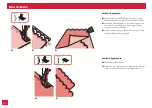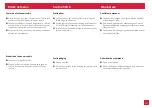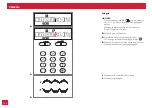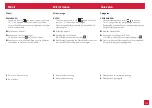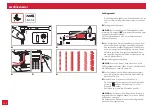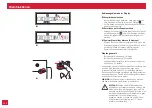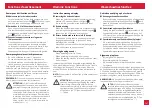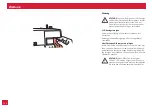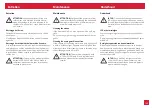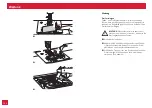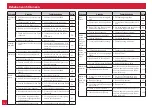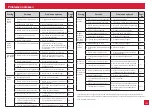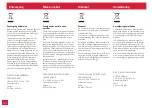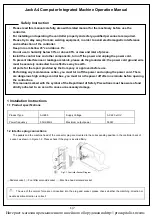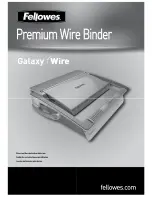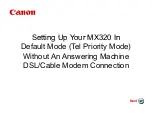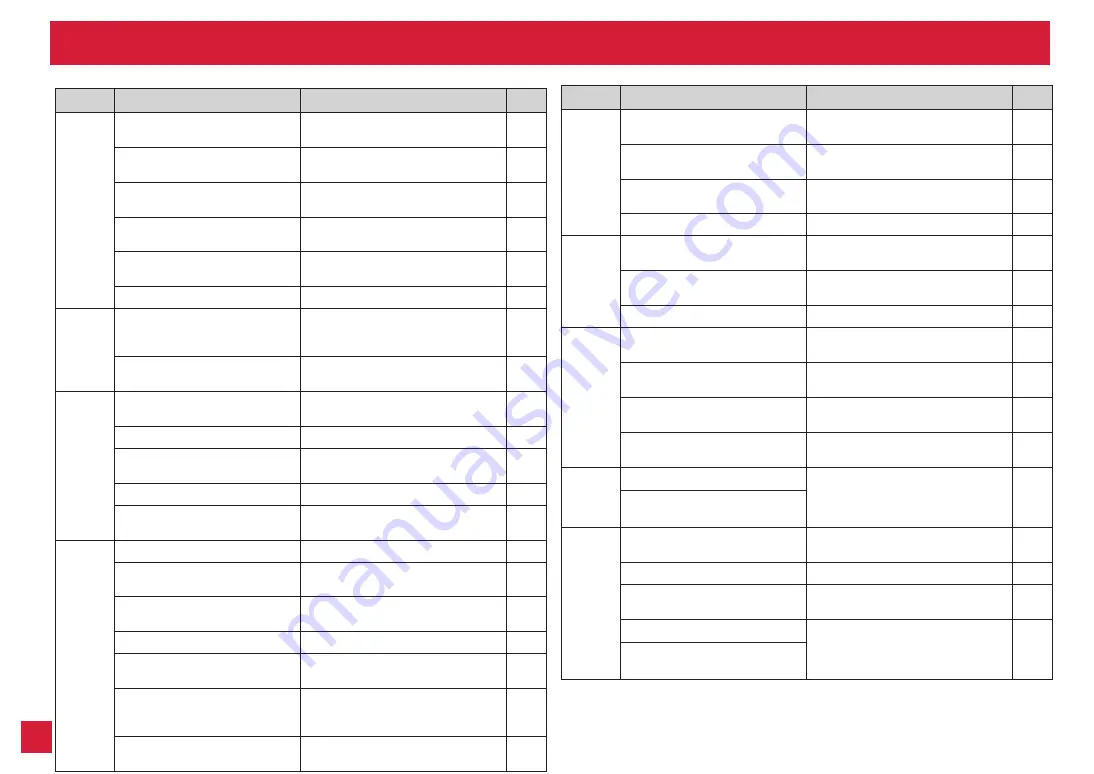
154
Trouble Shooting Guide
Problem
Cause
Correction
Page
Loose
stitches
1. The machine is not correctly
threaded.
1. Check the threading.
39
2. The bobbin case is not correctly
threaded.
2. Thread the bobbin case as illustrated. 37
3. Needle / fabric / thread combina-
tion is wrong.
3. The needle size must suit the fabric
and thread.
61
4. Thread tension is wrong.
4. Correct the thread tension.
51
Seam
gather
or pucker
1. The needle is too thick for the
fabric.
1. Select a finer needle.
61
2. The stitch length is adjusted
wrong.
2. Readjust the stitch length.
77
3. The thread tension is too tight.
3. Loosen the thread tension.
51
Seam
puckering
1. The needle thread tension is too
tight.
1. Loosen the thread tension.
51
2. The needle thread is not thread-
ed correctly.
2. Rethread the machine.
39
3. The needle is too heavy for the
fabric being sewn.
3. Choose a needle to suit the thread
and fabric.
61
4. Stitch length is too long for the
fabric.
4. Shorten stitch length
77
The
machine
jams
1. Thread is caught in the hook.
Remove the upper thread and bobbin
case. Turn the handwheel backwards
and forwards by hand and remove the
thread remnants.
151
2. The feed dogs are packed with
lint.
The ma-
chine
is noisy
1. Lint or oil have collected on the
hook or needle bar.
1. Clean the hook and feed dog as
described.
151
2. The needle is damaged.
2. Replace the needle.
63
3. Slight humming sound coming
from internal motor.
3. Normal.
/
4. Thread is caught in the hook.
Remove the upper thread and bobbin
case. Turn the handwheel backwards
and forwards by hand and remove the
thread remnants.
151
5. The feed dogs are packed with
lint.
Before calling for service, check the following items. If the problem still persists, contact the place
of purchase or your nearest authorized dealer.
Problem
Cause
Correction
Page
Upper
thread
breaks
1. The machine is not threaded
correctly.
1. Rethread the machine.
39
2. The thread tension is too tight.
2. Reduce the thread tension (lower
number).
51
3. The thread is too thick for the
needle.
3. Select a larger needle.
61
4. The needle is not inserted cor-
rectly.
4. Remove and reinsert the needle
(flat side towards the back).
63
5. The thread is wound around the
spool holder pin.
5. Remove the spool holder and unwind
the thread from the spool holder pin.
39
6. The needle is damaged.
6. Replace the needle.
62
Lower
thread
breaks
1. The bobbin case is not inserted
correctly.
1. Remove and reinsert the bobbin case
and pull on the thread. The thread
should pull easily.
37
2. The bobbin case is threaded
wrong.
2. Check both bobbin and bobbin case.
37
Skipped
stitches
1. The needle is not inserted cor-
rectly.
1. Remove and reinsert needle (flat side
towards the back).
63
2. The needle is damaged.
2. Insert a new needle.
63
3. The wrong size needle has been
used.
3. Choose a needle to suit the thread.
61
4. The foot is not attached correctly. 4. Check and attach correctly.
31
5. The machine is not threaded
correctly.
5. Rethread the machine.
39
Needle
breaks
1. The needle is damaged.
1. Insert a new needle.
63
2. The needle is not correctly
inserted.
2. Insert the needle correctly (flat
side towards the back).
63
3. Wrong needle size for the fabric. 3. Choose a needle to suit the thread
and fabric.
61
4. The wrong foot is attached.
4. Select the correct foot.
53
5. The needle clamp screw is loose. 5. Use the screwdriver to firmly tighten
the screw.
63
6. The presser foot that is used is
not appropriate for the type of
stitch that you wish to sew.
6. Attach the presser foot that is appro-
priate for the type of stitch that you
wish to sew.
56
7. The upper thread tension is too
tight.
7. Loosen the upper thread tension.
51

